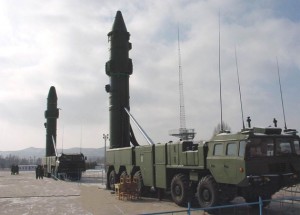
WASHINGTON: “We have found that the PLA suffers from potentially serious weaknesses.”
That is the simple and powerful declaration of a new study of China’s military by the RAND Corp., done at the behest of the congressionally-mandated U.S.-China Economic and Security Review Commission.
What are those Chinese weaknesses? The report, again, is admirably clear.
“The first is institutional. The PLA faces shortcomings stemming from outdated command structures, quality of personnel, professionalism, and corruption. The second set of weaknesses centers on combat capabilities. These shortcomings include logistical weaknesses, insufficient strategic airlift capabilities, limited numbers of special-mission aircraft, and deficiencies in fleet air defense and antisubmarine warfare.”
Those weaknesses may mean that the PLA wouldn’t be able to execute key missions the Chinese leadership has set for it, such as “various Taiwan contingencies, maritime claim missions, sea line of communication protection, and some military operations other than war scenarios.” You can translate much of that into an inability of the PLA to lay claim to and to patrol the Senkaku Islands, the Spratlys and other contested lands and waters.
Among the Peoples Liberation Army’s most prominent weaknesses are those that most analysts believe are America’s greatest strengths: its command structure and the quality, education and training of its people, the RAND report says. The Chinese continue to struggle mightily, as did the United States, with its ability to wage joint warfare, with a clear line of command and relatively effective integration of weapons and troops.
The PLA, RAND assesses, “also faces potential weaknesses in its ability to protect Chinese interests in space and the electromagnetic spectrum,” which is ironic given the enormous attention paid to the Chinese anti-satellite test and its lasing of American spy satellites.
There’s more good news for those who measure and counter China’s growing military and diplomatic heft. And it comes in a key area: acquisition.
“The main problems the defense industry faces include widespread corruption, lack of competition, entrenched monopolies, delays and cost overruns, quality control problems, bureaucratic fragmentation, an outdated acquisition system, and restricted access to external sources of technology and expertise,” the report says.
Of course, the Chinese have, as the report notes, made remarkable advances since the Gulf War, deploying “modern multimission surface ships; advanced submarines; more-modern fighter aircraft; and conventional cruise and ballistic missiles, including an anti-ship ballistic missile (ASBM) designed to target U.S. aircraft carriers.”
Several things should be noted about this report. First, it is not based on classified sources or information. But the authors have swept through an enormous library of official Chinese documents, as well as official US government documents.
You can be sure that the Chinese will read this report and press as swiftly as a corrupt authoritarian regime can to fix these weaknesses. Read the entire report. It’s worth it.
Lockheed Martin projects potential $1 billion loss on classified program
Lockheed CFO Jay Malave said the company currently expects the program to become profitable on an annual basis around the 2028 timeframe.




























